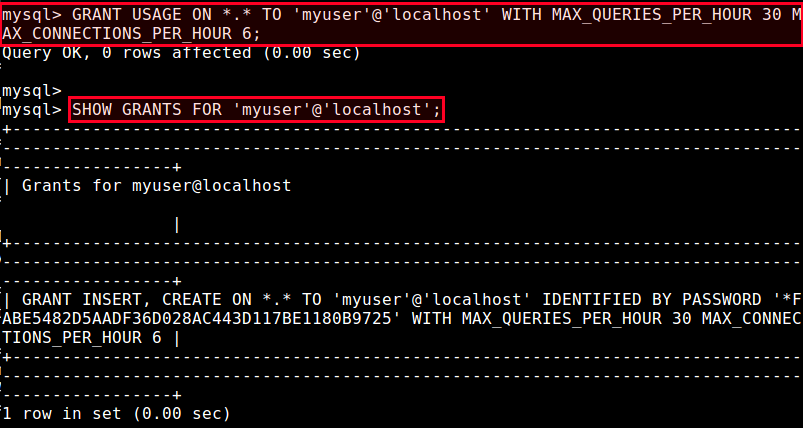
At the same time, it provides you with more than enough tools to cover all your needs. It has an intuitive graphical user interface that is easy to get used to. If you’re not a fan of the command-line interface, you can set up a new MySQL database with phpMyAdmin – one of the most popular browser-based database administration platforms. Once you provide your MySQL account’s password, mysqladmin will create the database for you. Note that this is not an SQL query so you don’t need a semicolon at the end. So, if you use the root account to create a database called “newdatabase,” the command will look like this: Flushing information logs, status variables, and tablesĪs long as you have an account with SYSTEM_USER privileges, you can use mysqladmin to create a database without logging in to the MySQL server or executing any SQL queries.Īfter you connect to your hosting account via SSH, the syntax you’ll use is as follows:.Mysqladmin is a powerful database administration tool that gives you a quick and easy way to perform quite a few MySQL-related tasks, including:

Another option to set up a database via the command line interface is through the mysqladmin binary. All you need to do is to configure your website to work with them. With that, your database and MySQL user are ready to go. If you want to give the user access to a specific table, you can add the name of the table after the dot. *” after the database’s name means that the user can modify all the tables in the database. Here’s what you need to enter:ĬREATE DATABASE įinally, you have to give the user account permission to access the database and modify the information inside it. Next, it’s time to set up the database itself. The user account will have read/write permissions over the new database, so you must ensure it’s well protected. The command is:ĬREATE USER ‘’ ĭon’t forget to use a strong password. Your first task is to create a MySQL user account. If you forget it and press Enter, MySQL will interpret this as a new line. What you do need to remember, however, is that every SQL command ends with a semicolon. The syntax is not too complicated, but there are a couple of things you need to remember.įor readability purposes, SQL statements are usually written in uppercase letters, though they can also work if you don’t stick to this rule.
CREATE USER MYSQL WORKBENCH HOW TO
The command below shows you how to log in with the root account, but you can use any account with SYSTEM_USER privileges:Īfter you provide the root account’s password, MySQL will sign you in and display the mysql> prompt.įrom here on, you’ll use SQL commands. To create a new user and database, you’ll need an account with sufficient privileges. The first method requires logging in to the MySQL server and executing SQL commands. If you have an SPanel server, you can go straight to the SSH Terminal available in the User Interface. You can use a dedicated client like PuTTY or your operating system’s built-in command-line tool. In both cases, you first need to connect to your hosting account via SSH. Today, we’ll show you not one, but two ways to do it. Traditionally, MySQL databases and user accounts are set up via the command-line interface (CLI). Creating a MySQL Database via the Command Line The web application that powers your website uses these credentials to retrieve information and display it on users’ screens.


To minimize the risk of unauthorized access, every MySQL account has its own set of login credentials. In addition to the database, you also need a MySQL user account with privileges to read and modify the stored information. It stores everything from your blog posts and articles to users’ personal information, passwords, purchases, etc.įor security reasons, MySQL databases aren’t freely accessible. The database is an integral part of the operation of every dynamic website. A MySQL database stores information in tables, and users and web applications use the Structured Query Language (SQL) to retrieve the correct data from the correct table. MySQL is a relational database management system. In other words, whatever website you’re building, you, too, probably need a MySQL database. The most popular content management systems, including WordPress, Joomla, Drupal, Magento, etc., use MySQL, and so do some of the planet’s top websites like Facebook, Twitter, Wikipedia, and YouTube. However, over the years, its popularity has grown immensely, and we can now safely say that the internet would be a very different place without it.
CREATE USER MYSQL WORKBENCH SOFTWARE
Like many of the technologies we take for granted these days, MySQL was originally a small project run by a team of software engineers who wanted to create a database system for personal use.


 0 kommentar(er)
0 kommentar(er)
